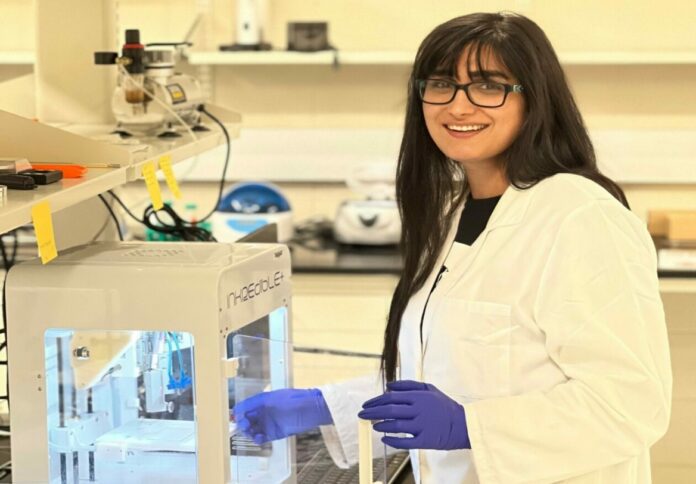
Missouri S&T researchers are developing new 3D-printed hydrogel dressings to hasten and improve the healing process for patients with second-degree burns.
The findings, published in the International Journal of Bioprinting in July, show that researchers can better regulate the discharge of water from the dressing by 3D printing it and incorporating the glass.
Instead of arriving in spurts, the water is timed out consistently over a 10-day period, which implies the dressing should be effective on the wound for a longer period of time.
Dr Fateme Fayyazbakhsh, an assistant research professor of mechanical engineering at S&T and the project’s lead researcher, stated the team has created dressings with bioactive compositions to more effectively address the problems that patients with burn injuries frequently encounter.
“The continuous hydration provided by these dressings, along with their non-adhesive and porous texture, show great promise in promoting moist wound healing, reducing pain caused by atraumatic dressing removal, and minimizing scar tissue formation,” Fayyazbakhsh explained.
In a study using a murine model, researchers found that 3D-printed dressings resulted in quicker wound closes, reduced scarring, non-adhesive contact with the dressing, and simpler dressing removal.
The next stages in this research, according to Fayyazbakhsh, involve continuing to perfect and enhance the dressing, as well as verifying its usefulness over the long term and examining its practicality as a therapy option.
The ultimate objective, according to her, is to conduct patient clinical studies before commercialising the therapy.
“We are making great strides toward one day having the dressings commercialized and providing better treatment for burn patients,” Fayyazbakhsh said.
Dr Ming Leu, the Keith and Pat Bailey Distinguished Professor of mechanical engineering at Missouri S&T, is the principal investigator of this project.
Other researchers for the project include Michael J. Khayat, who earned a bachelor’s degree in ceramic engineering from S&T in 2021 and is now a PhD student at McGill University; Candy Sadler, an adult geriatric nurse practitioner at the Phelps Health Wound Ostomy Centre; and Dr Yue-Wern Huang, professor of biological sciences and associate dean for research and external relations in the College of Arts, Sciences, and Education at S&T.




















